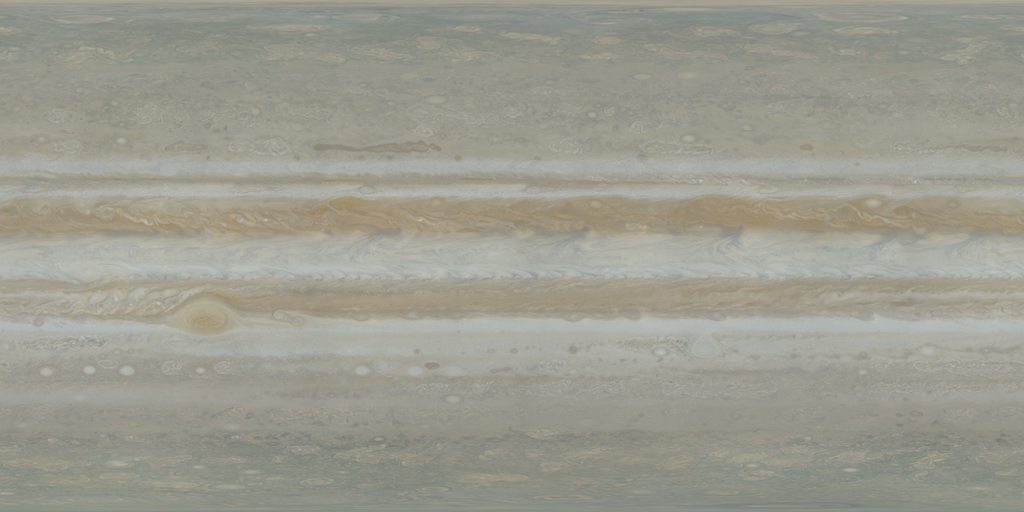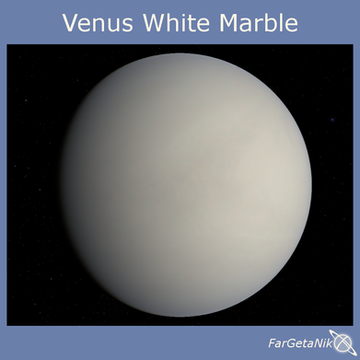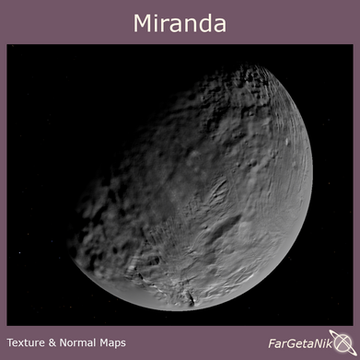HOME | DD
 FarGetaNik — Jupiter True Color Texture Map 8k - Cassini 2000
by-nc-sa
FarGetaNik — Jupiter True Color Texture Map 8k - Cassini 2000
by-nc-sa

#cassini #celestia #jupiter #map #nasa #planet #spacecraft #texture #truecolor
Published: 2018-05-20 18:16:52 +0000 UTC; Views: 9932; Favourites: 28; Downloads: 588
Redirect to original
Description
Björn Jónsson just released a new texture of Jupiter combining both his old Cassini texture and newer imagery of Juno showing the polar regions in more detail. The texture is in higher resolution than anything we've seen so far for Jupiter. For my work, I rescaled the texture to 8k, as the original data was somewhat noisy and blurry at full resolution.
With the help of this Cassini image and spectral color data I was able to calibrate the texture to match true color perception. The results are very different from what I concluded a while ago . I will use this texture to recalibrate my other true color texture maps .
I removed some brightness anomalies and reduced the gradient between the lattitudes. The texture is in planetographic coordinates, while the longitude is aligned to show the GRS in the right spot when rendered in Celestia around the time of the Cassini flyby.
----------------------
Update Sep 2019
Jupiter is my Nemesis. I had to redo this map again. While at it I mixed in the hues of a smaller resolution map that was made from true color data, so the relative hues are a bit more realistic now (the BJ map is made from only 2 color filters).
This time I wasted so much time calculating the parameters to imput for the contrast and it didnt work out at all. After a lot of frustration I had it working. I did 2 versions, one where I matched the contrast linearly, one with gamma. Comparing both results with the actual image im trying to match the texture with tells me the truth lies somewhere in between... so I mixed both maps and got this. I also refined the overall color of Jupiter and got a slightly more natural hue (the previous version of this map had Jupiter slightly greenish cause I misread the red value from the sprectrum). At least this map looks pretty natural and for now im content with it. Let's see how long it lasts...
-------------------
Update Oct 2019
Not very long. Alright I refined my procedure for converting spectral and albedo information into a texture. I now use the geometric albedo rather than the bond albedo as a reference for texture brightness, with a normalisation factor of 2/Pi (from lambertian scatterer phase integration). Also I used slightly different spectral ranges for red, green and blue channel intensities.
Meanwhile I improved atmospheric render and included absorption. To compensate, I had to remove the effect of absorption from the texture in order for the planet to render in the correct color, so the base texture is more yellowish now (the main absorber is methane that absorbs red light, making the planet appear more teal-blueish). So keep in mind this texture is only "truecolor" when rendered belowe an atmophere with the correct absorption parameters.
So with this in mind, I reprocessed the base texture. This time i concluded I can approximate realistic contrast by adjusting the gamma value only (not contrast of individual color channels like previosuly). I assumed Björn Johnsson's texture had a gamma value of 1.5, so I boosted it by 1.6 to get to the display standard of 2.2.
On the way I also changed the way I compensated for the gradient. I split the texture into the Cassini coverage and Juno coverage, then blurred the seam between those 2 and removed the resulting gradient. I'm more statisfied with the result this way.
Related content
Comments: 7

👍: 0 ⏩: 0

👍: 0 ⏩: 0

I am using this texture for my Space Engine gas planets addon coming soon!
👍: 0 ⏩: 0

Yeah Björn Jónsson posted his texture on Twitter. This is cool by the way!
👍: 0 ⏩: 0



























